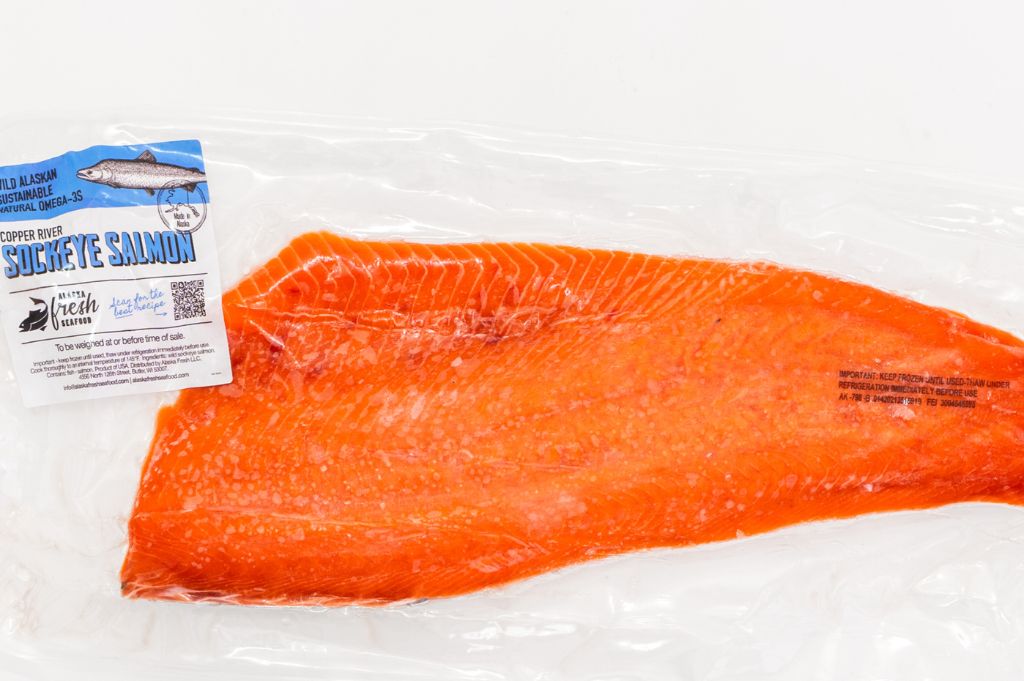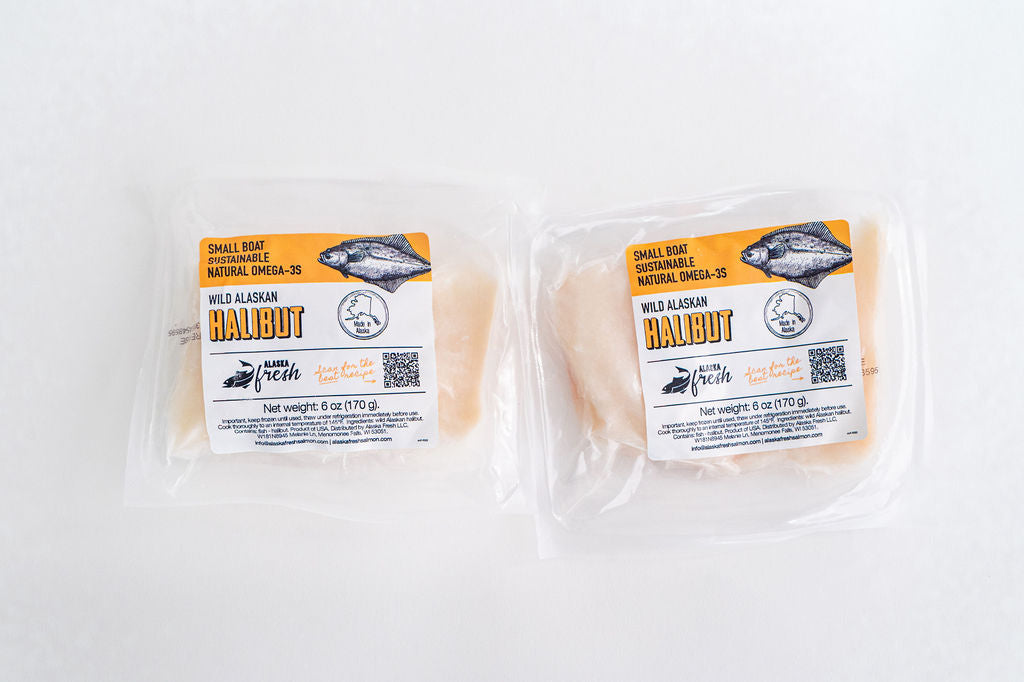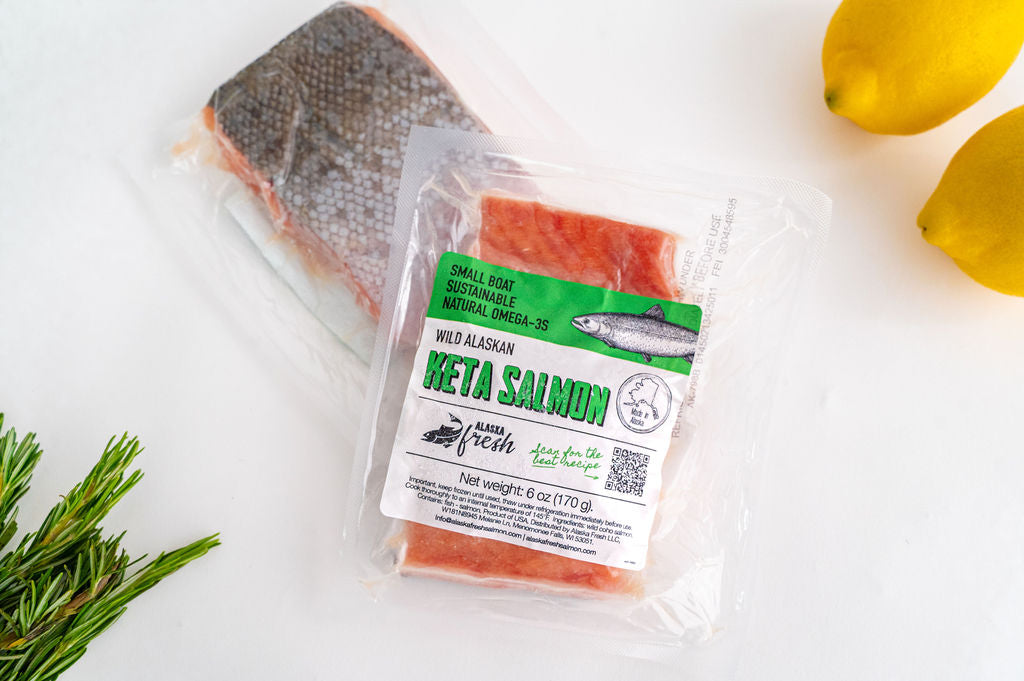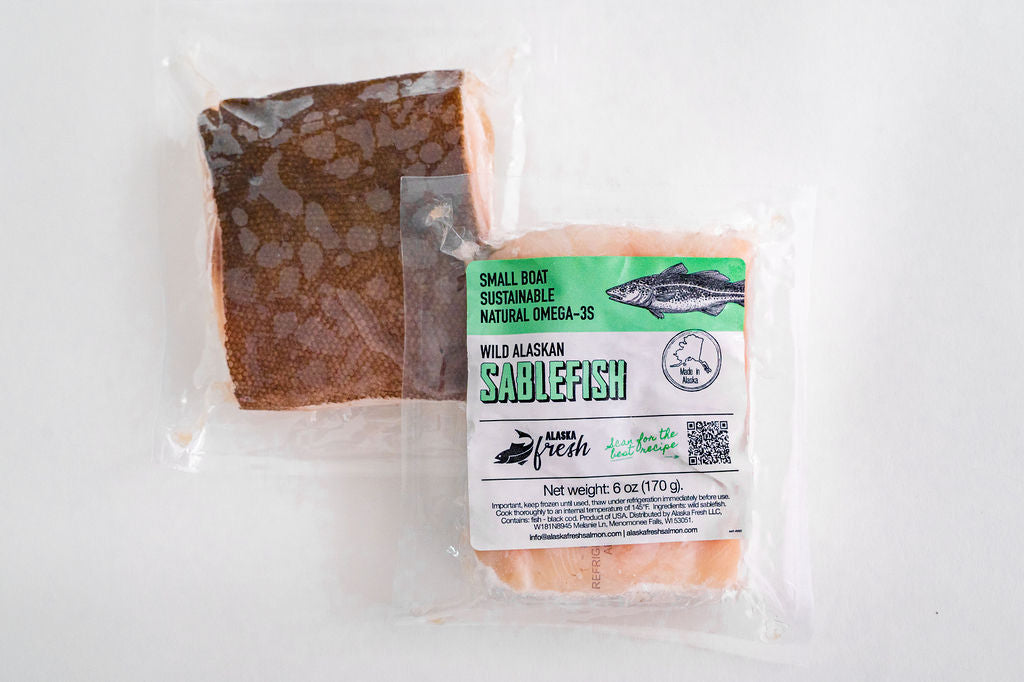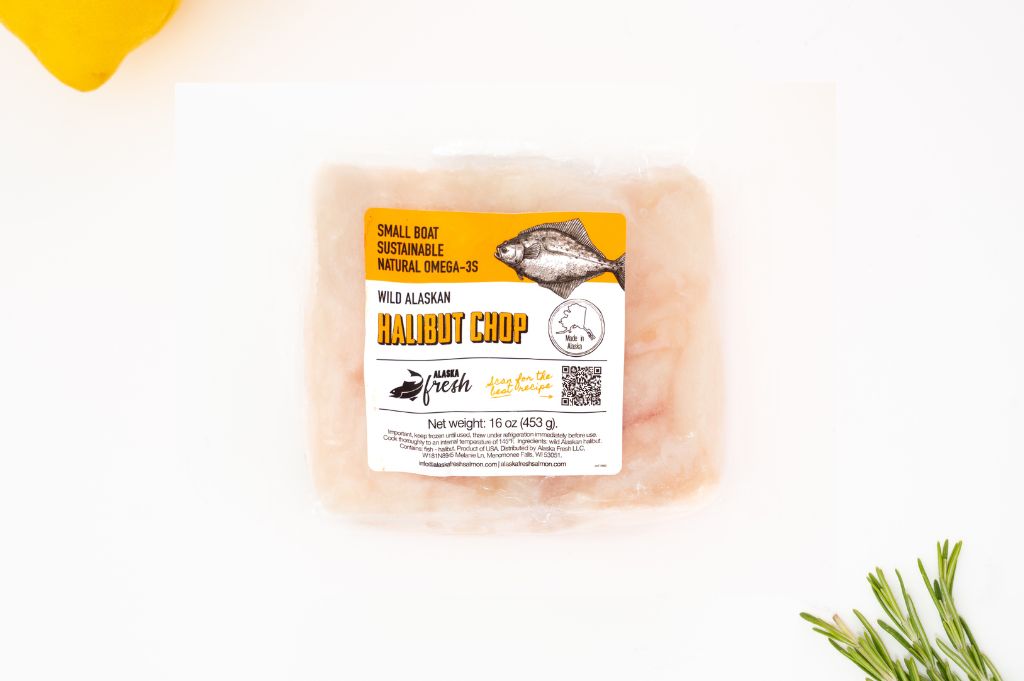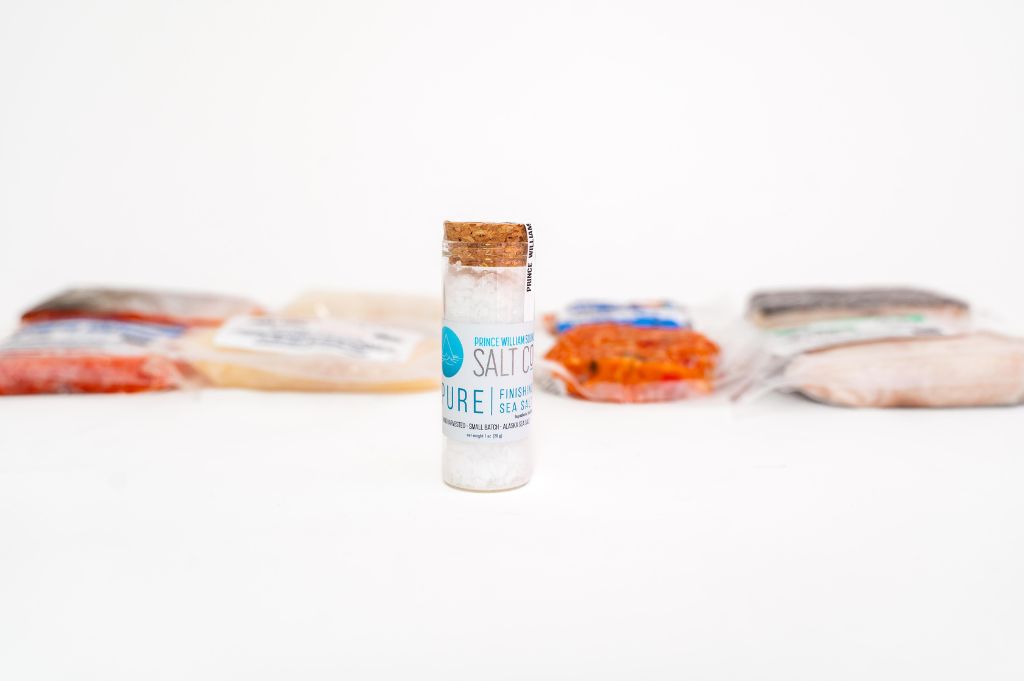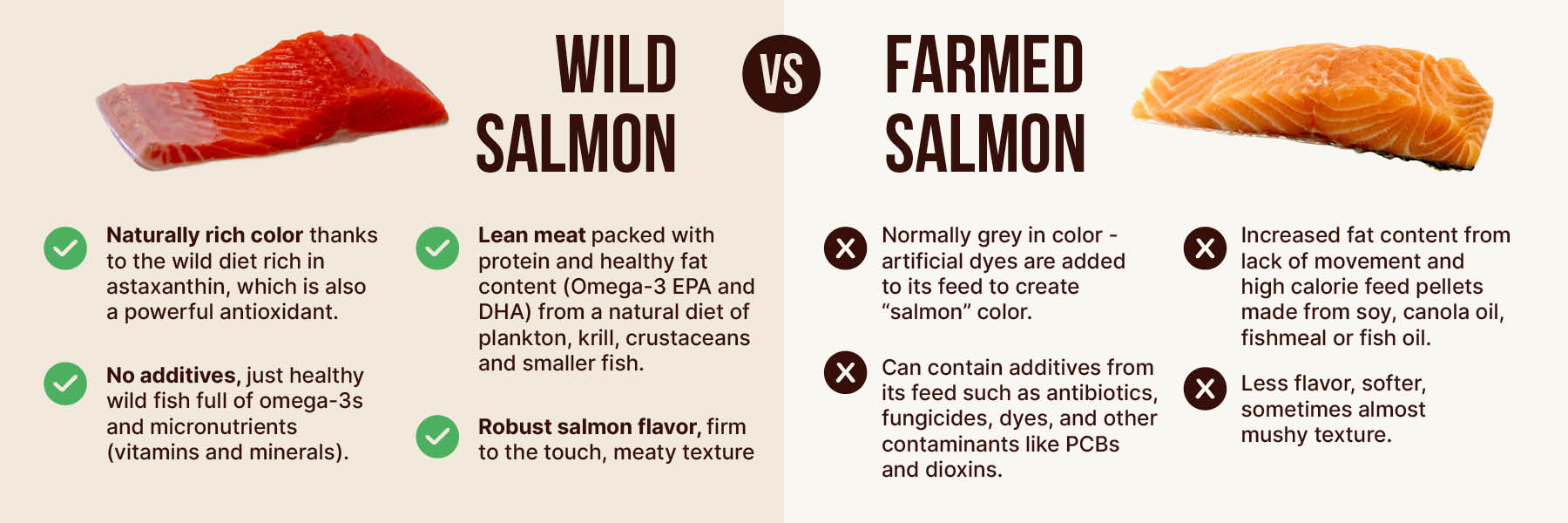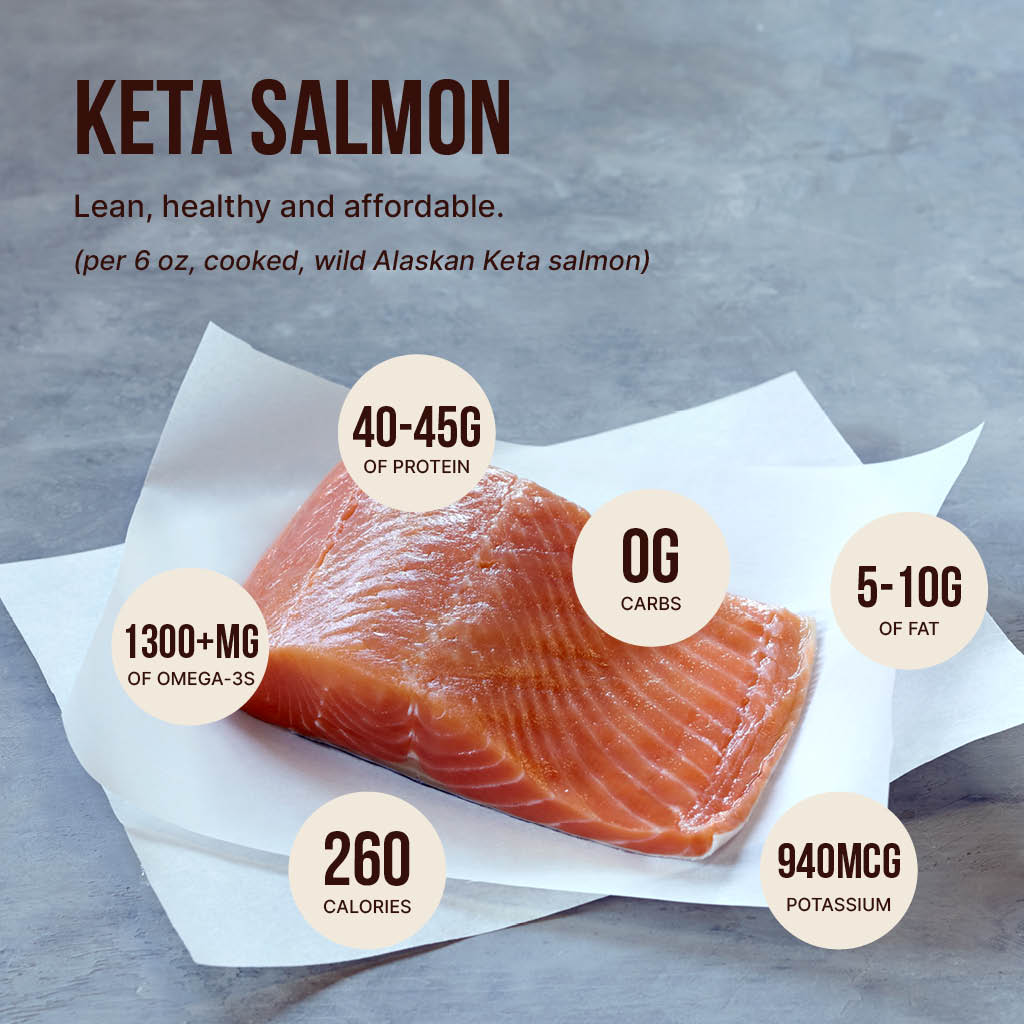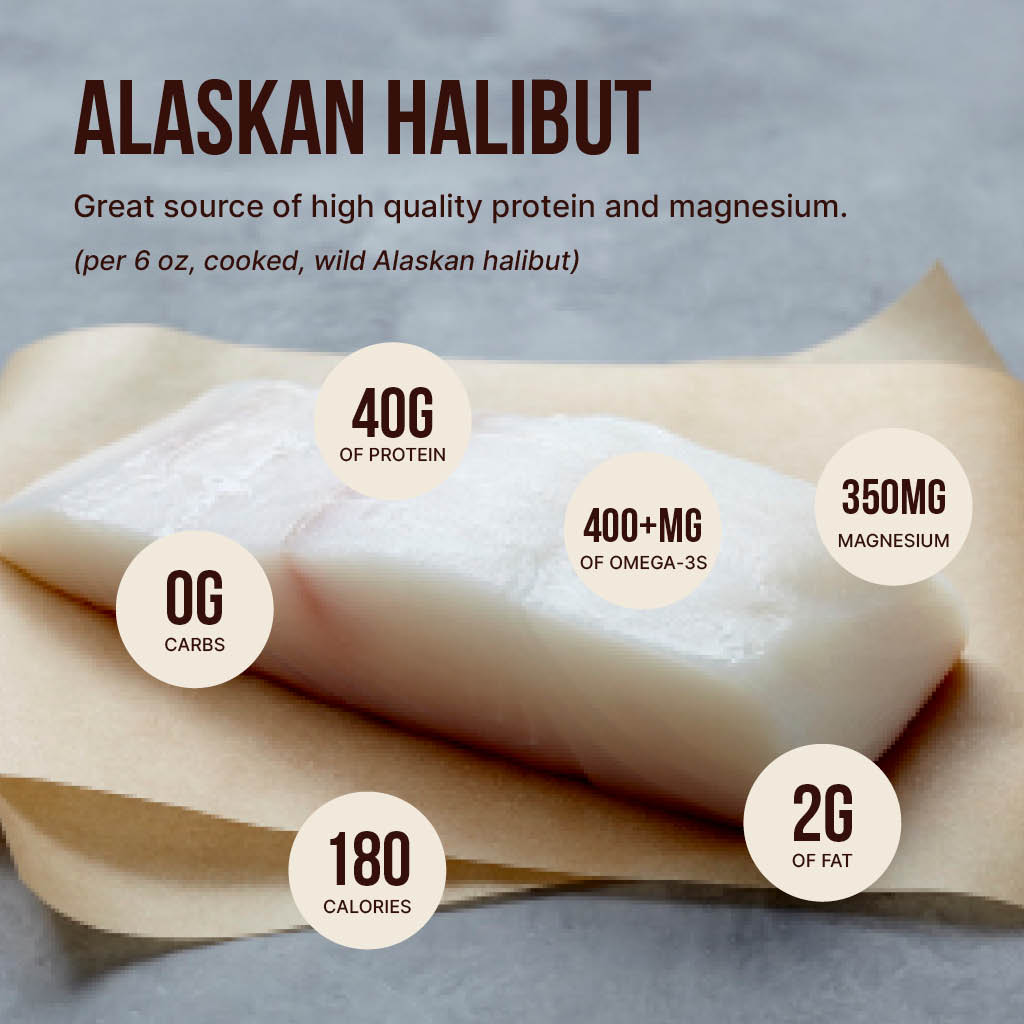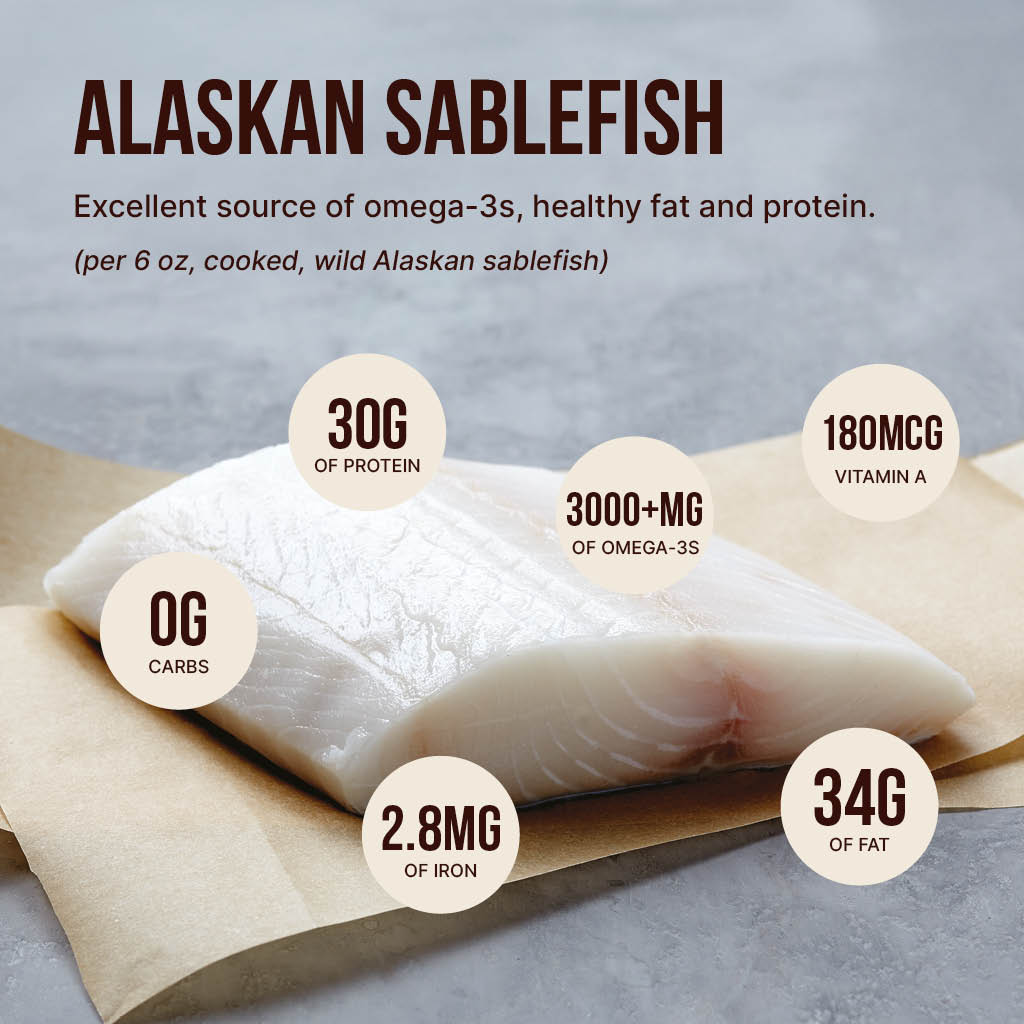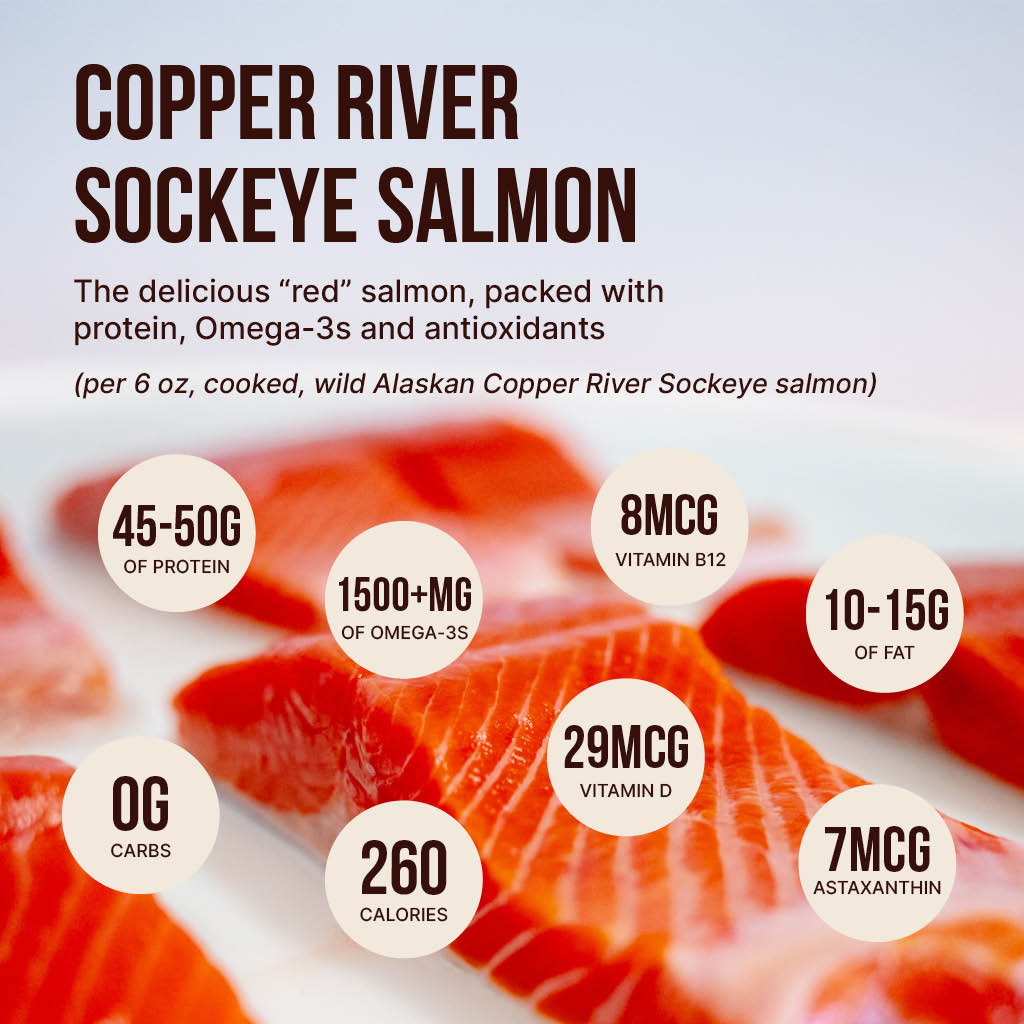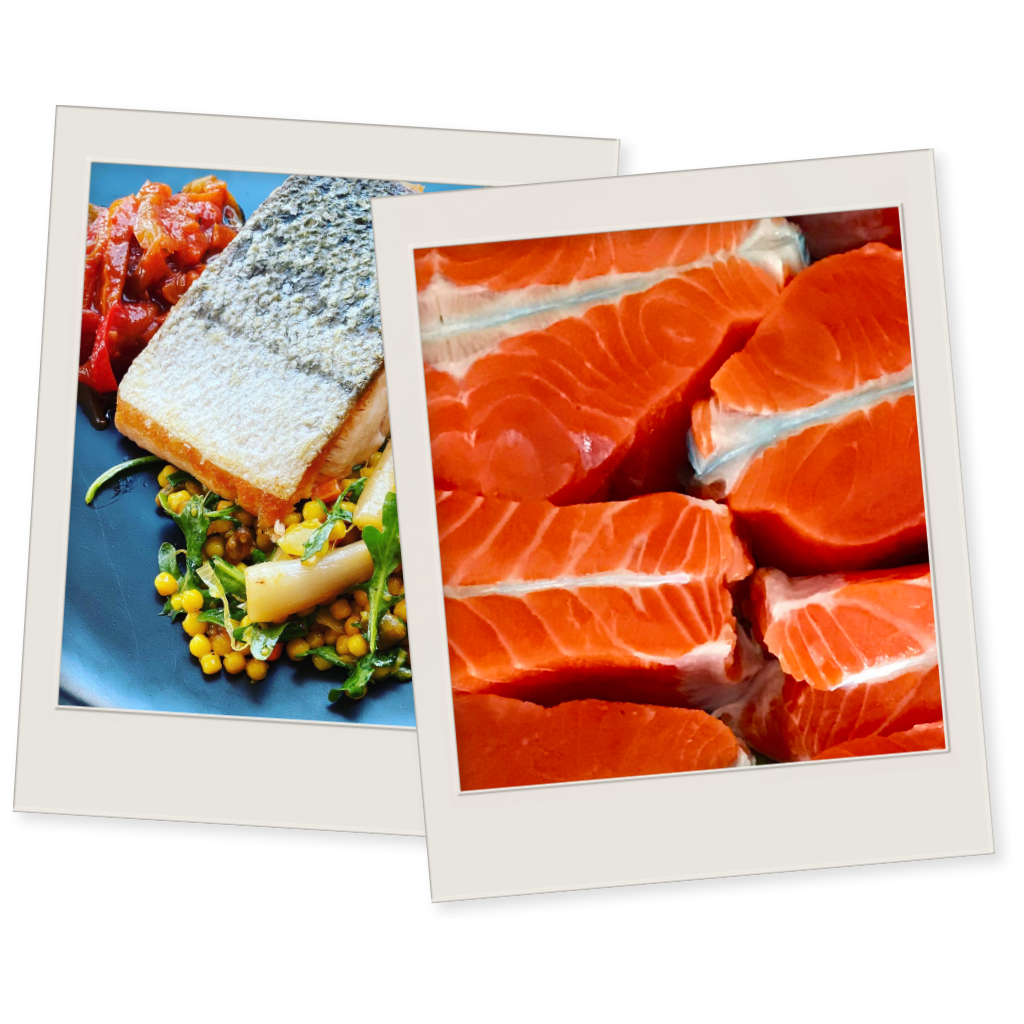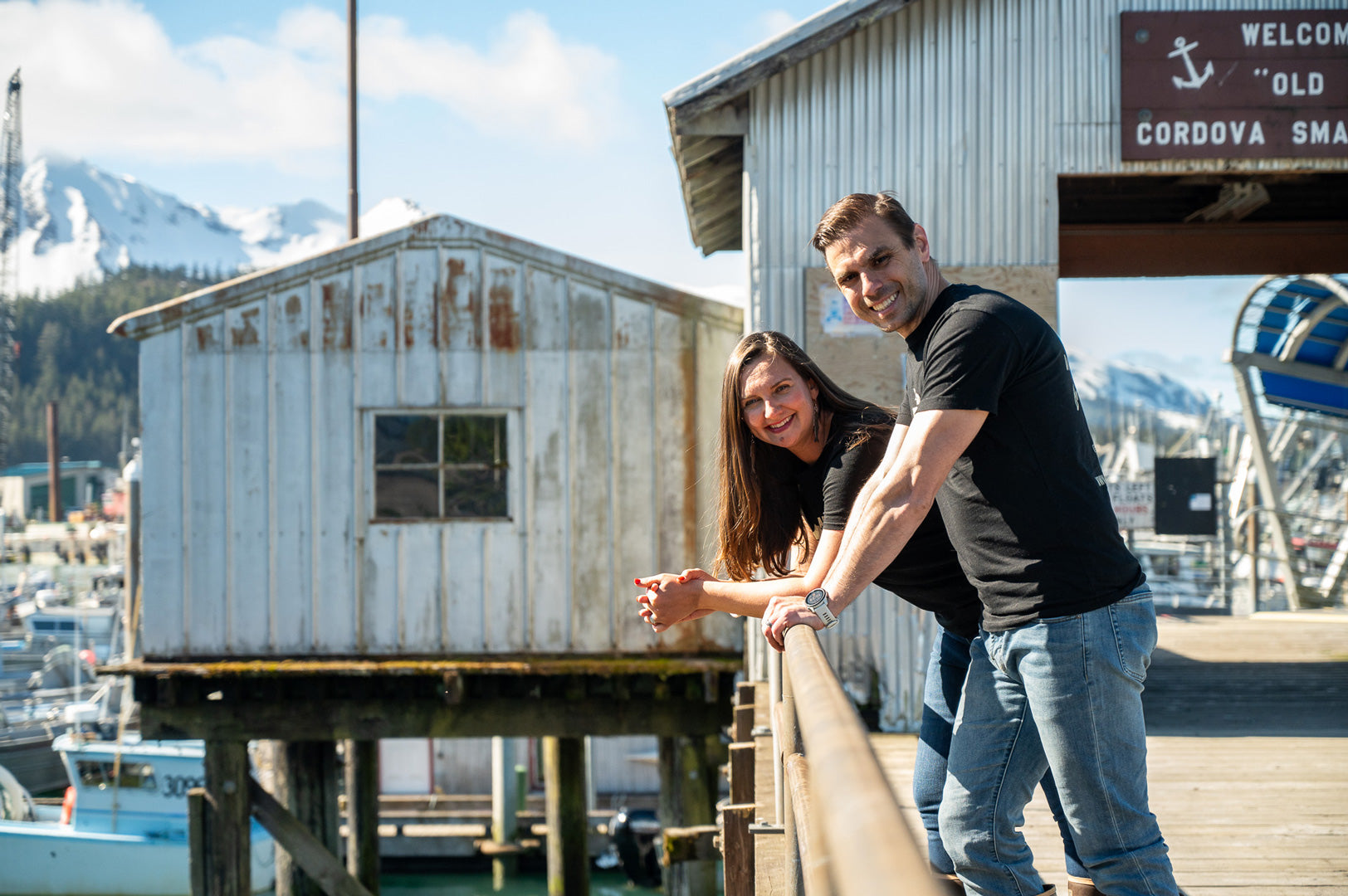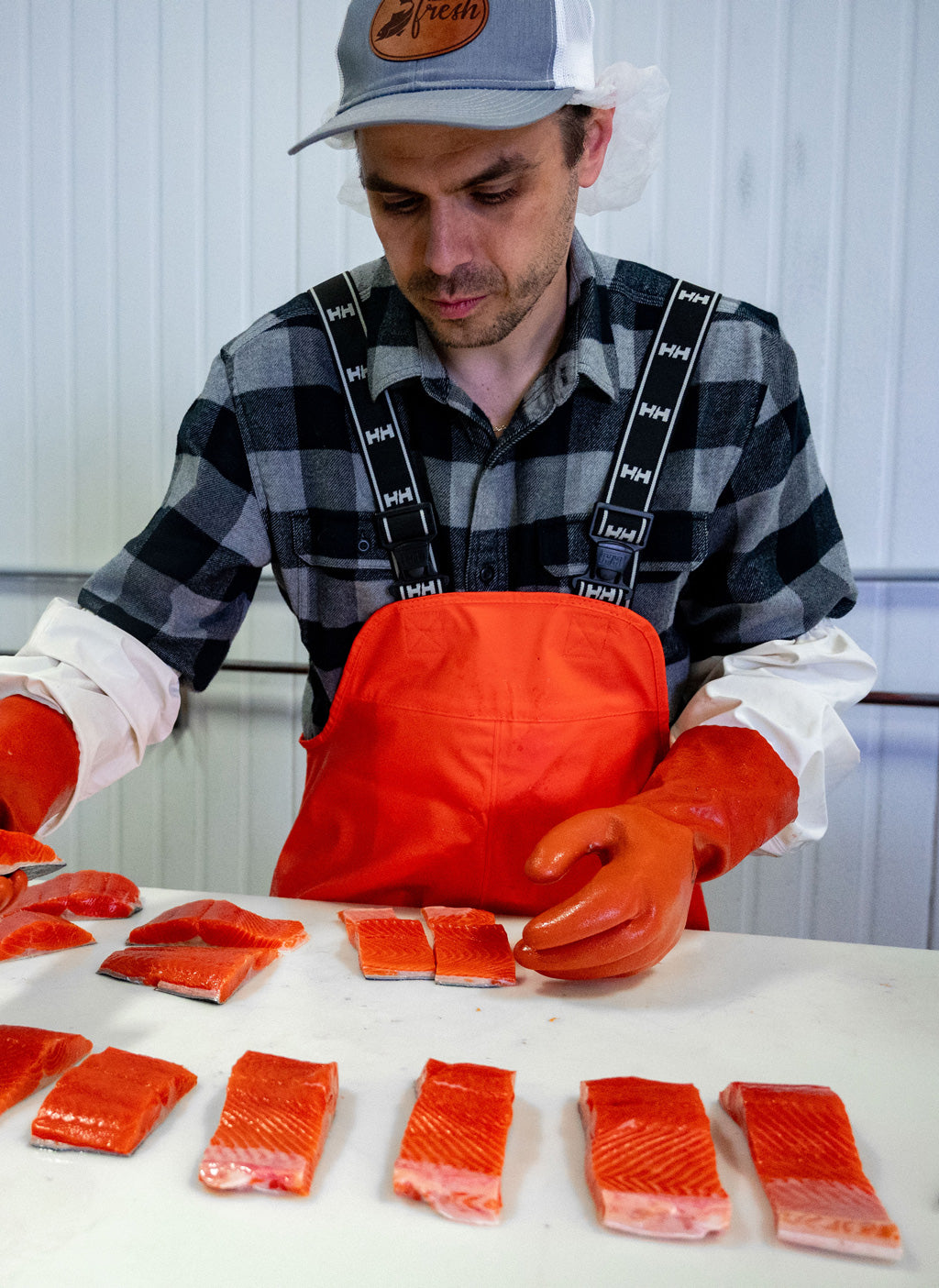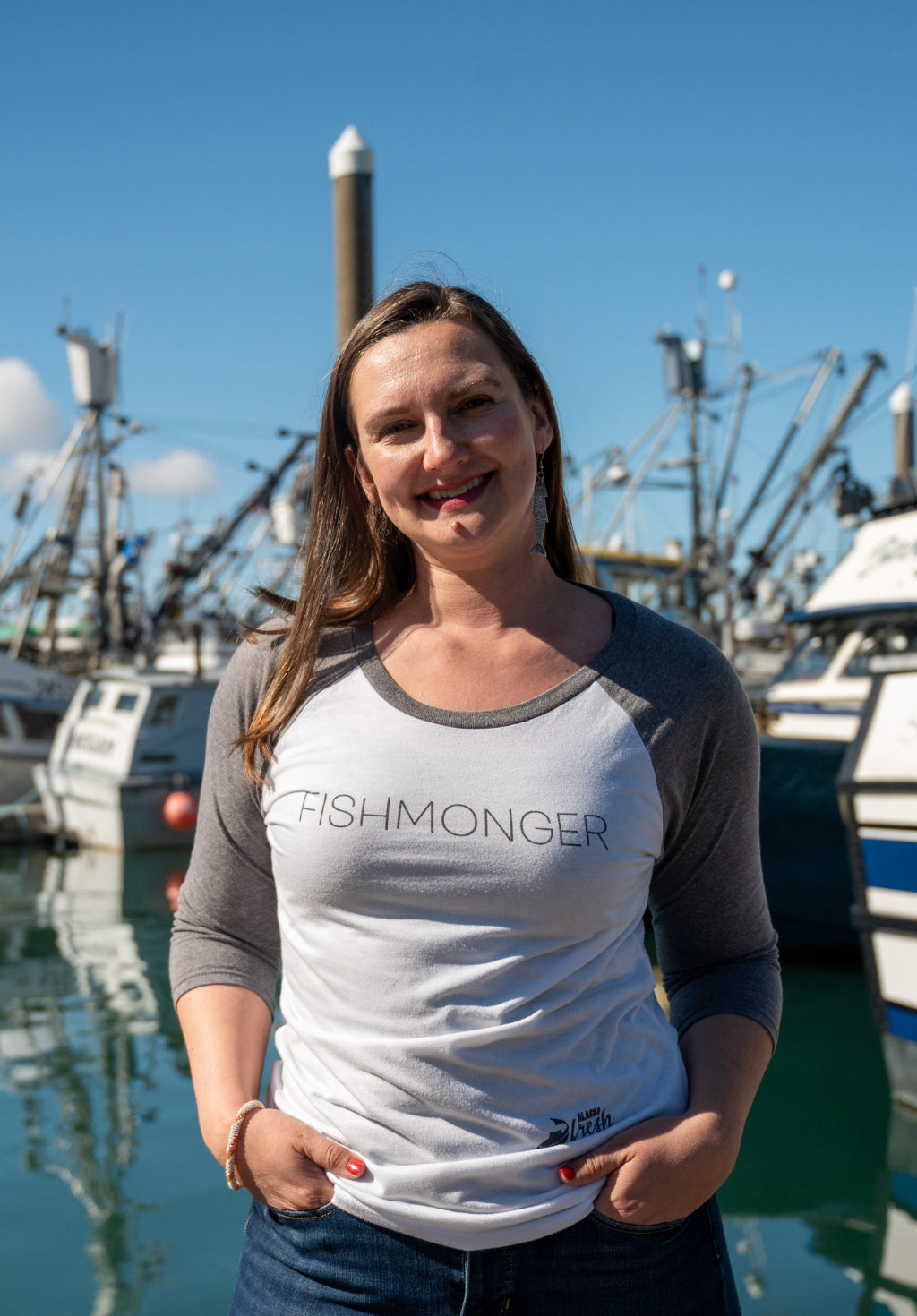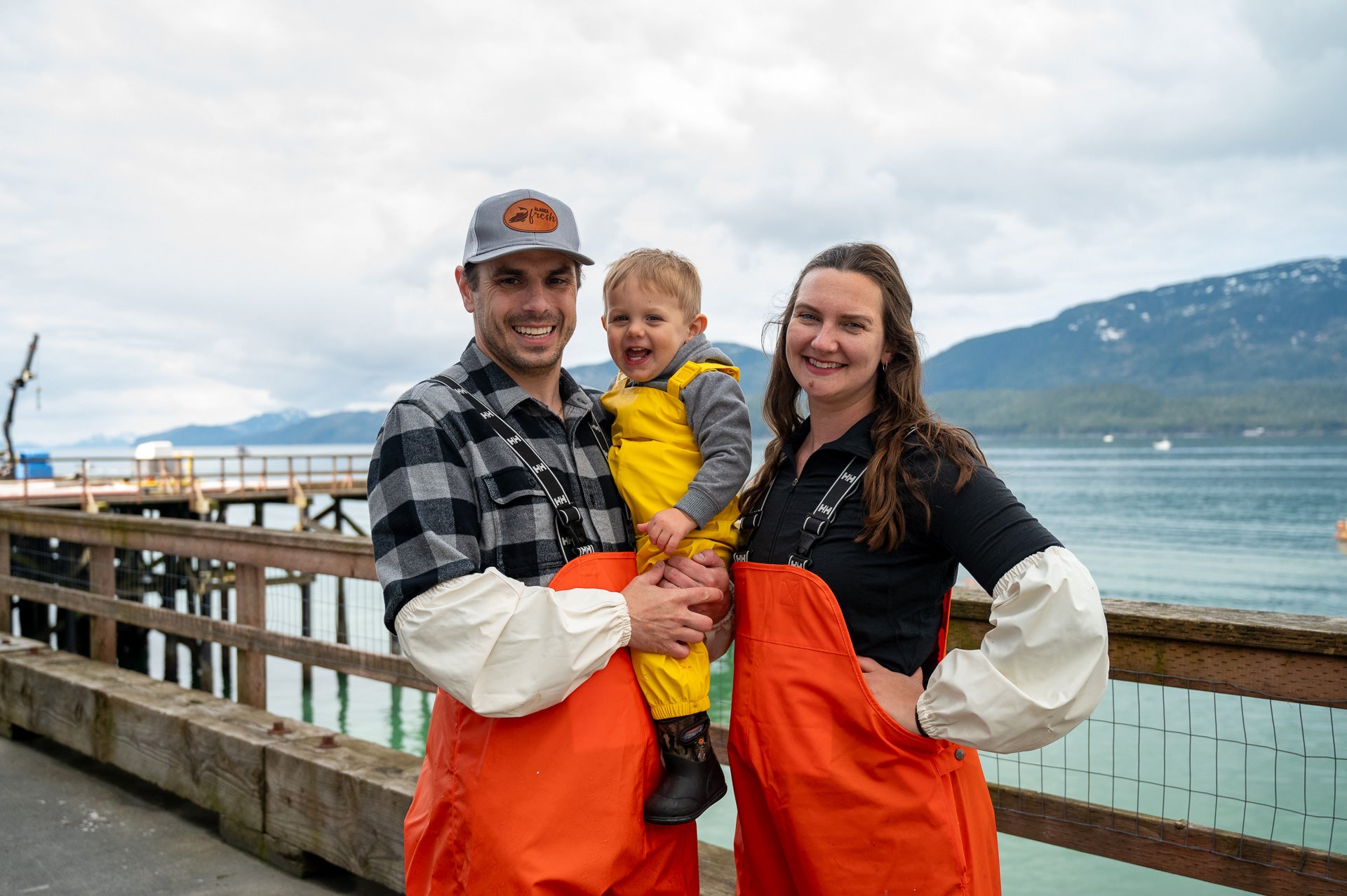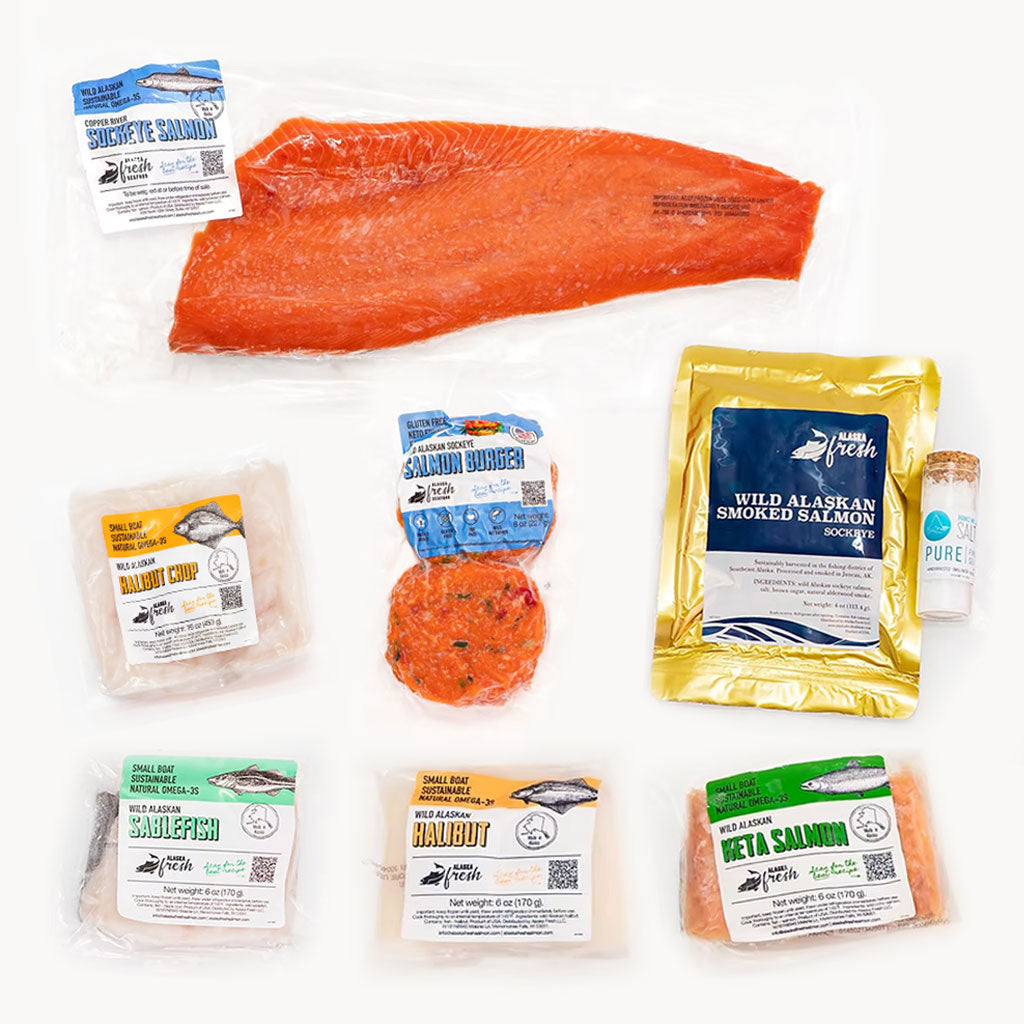
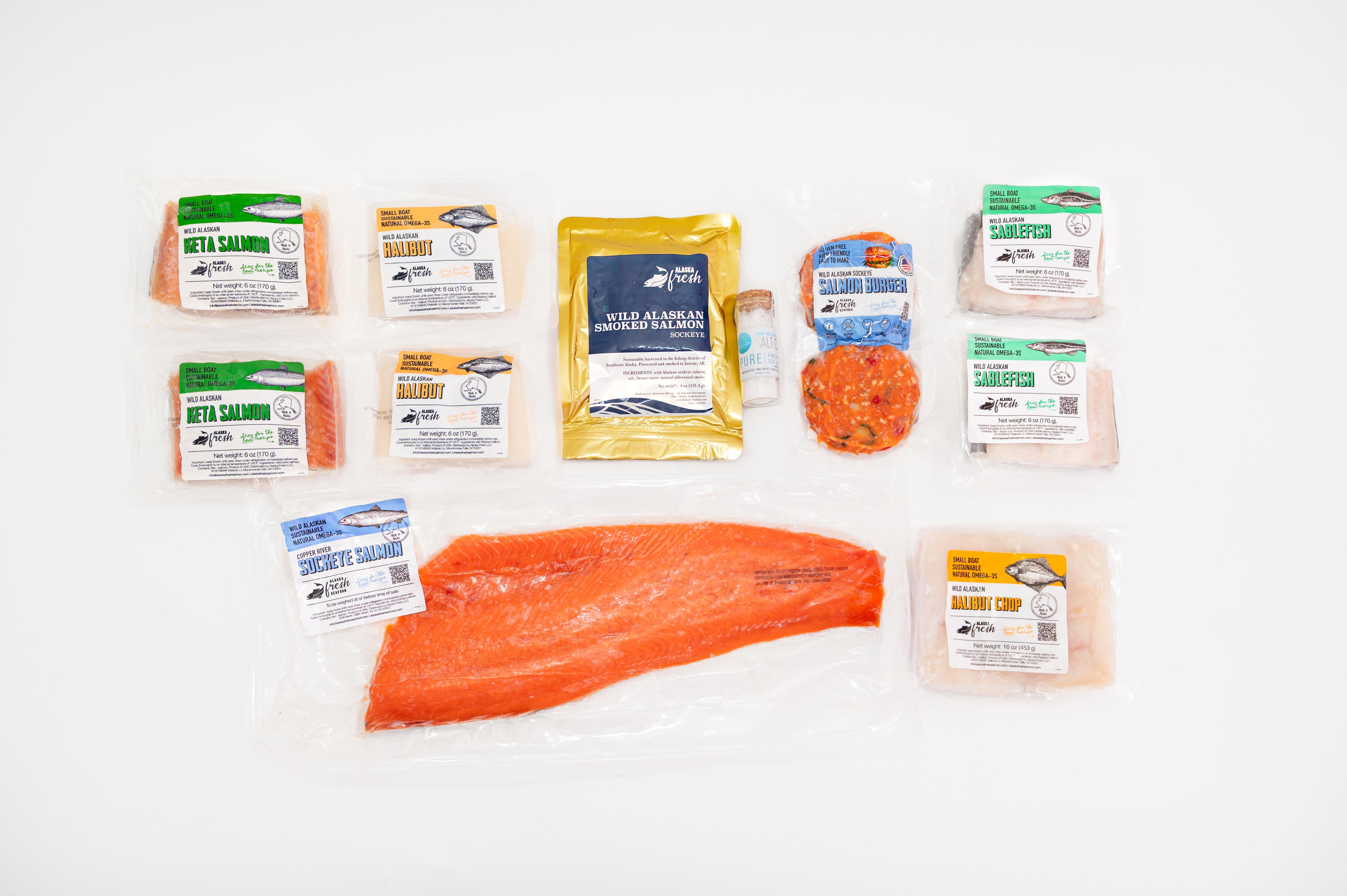
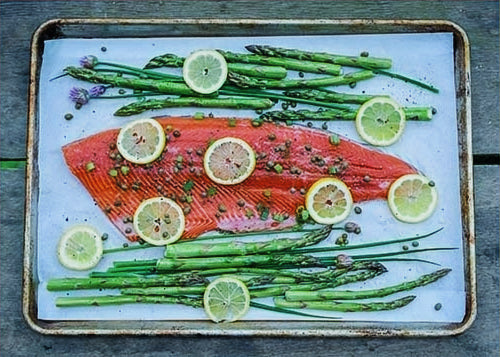
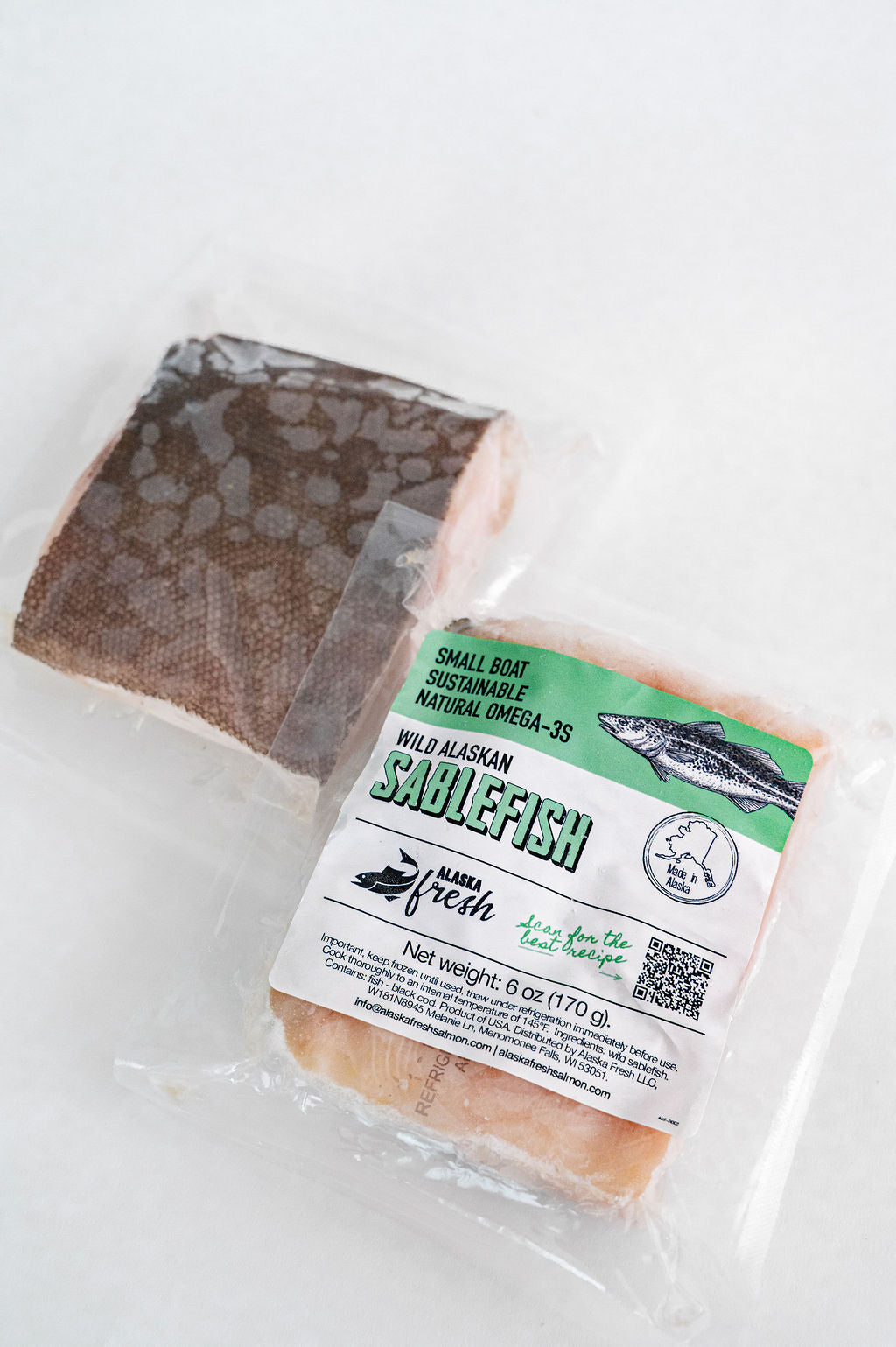
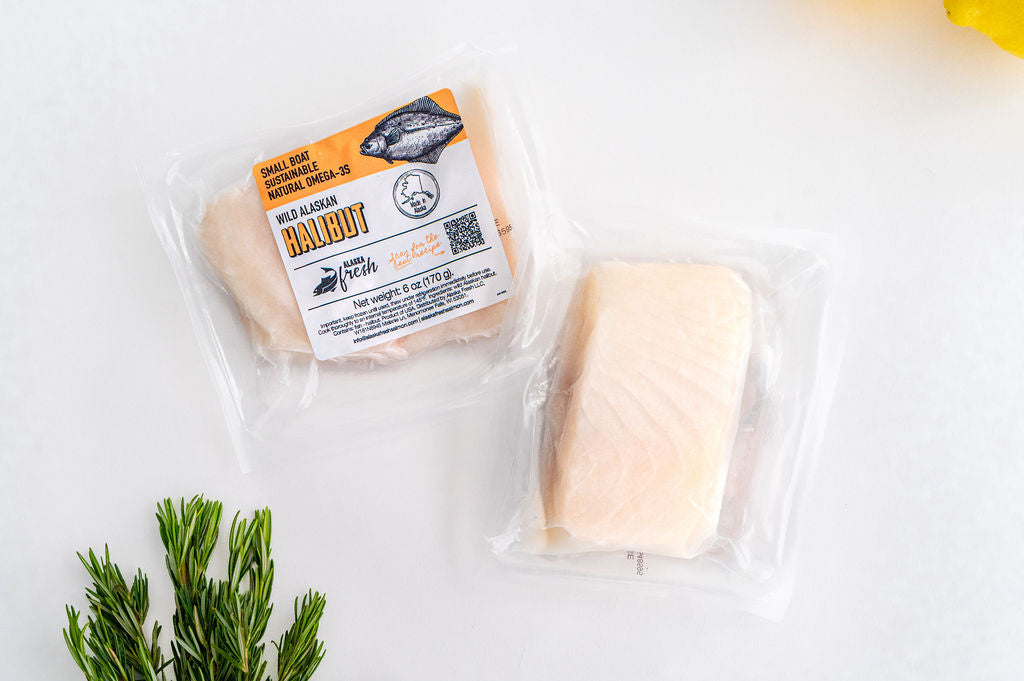
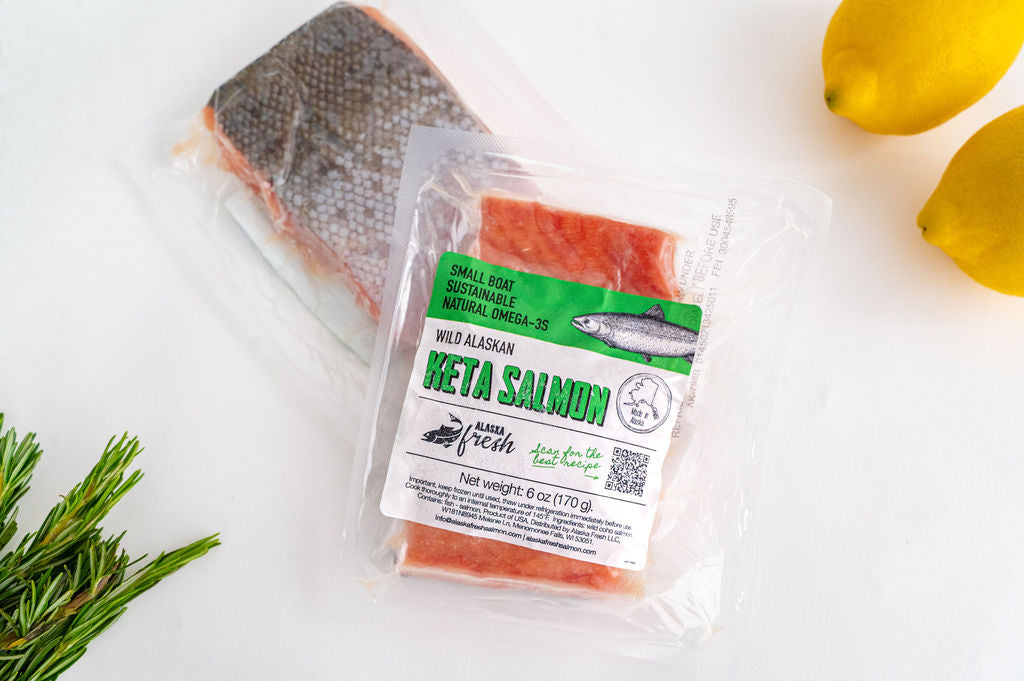
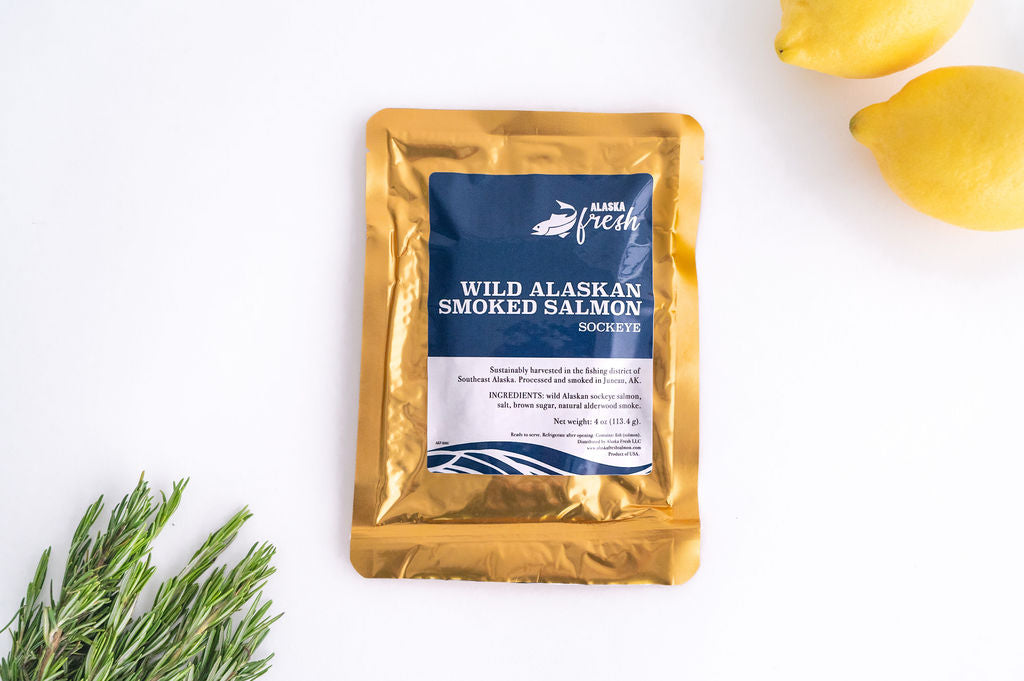
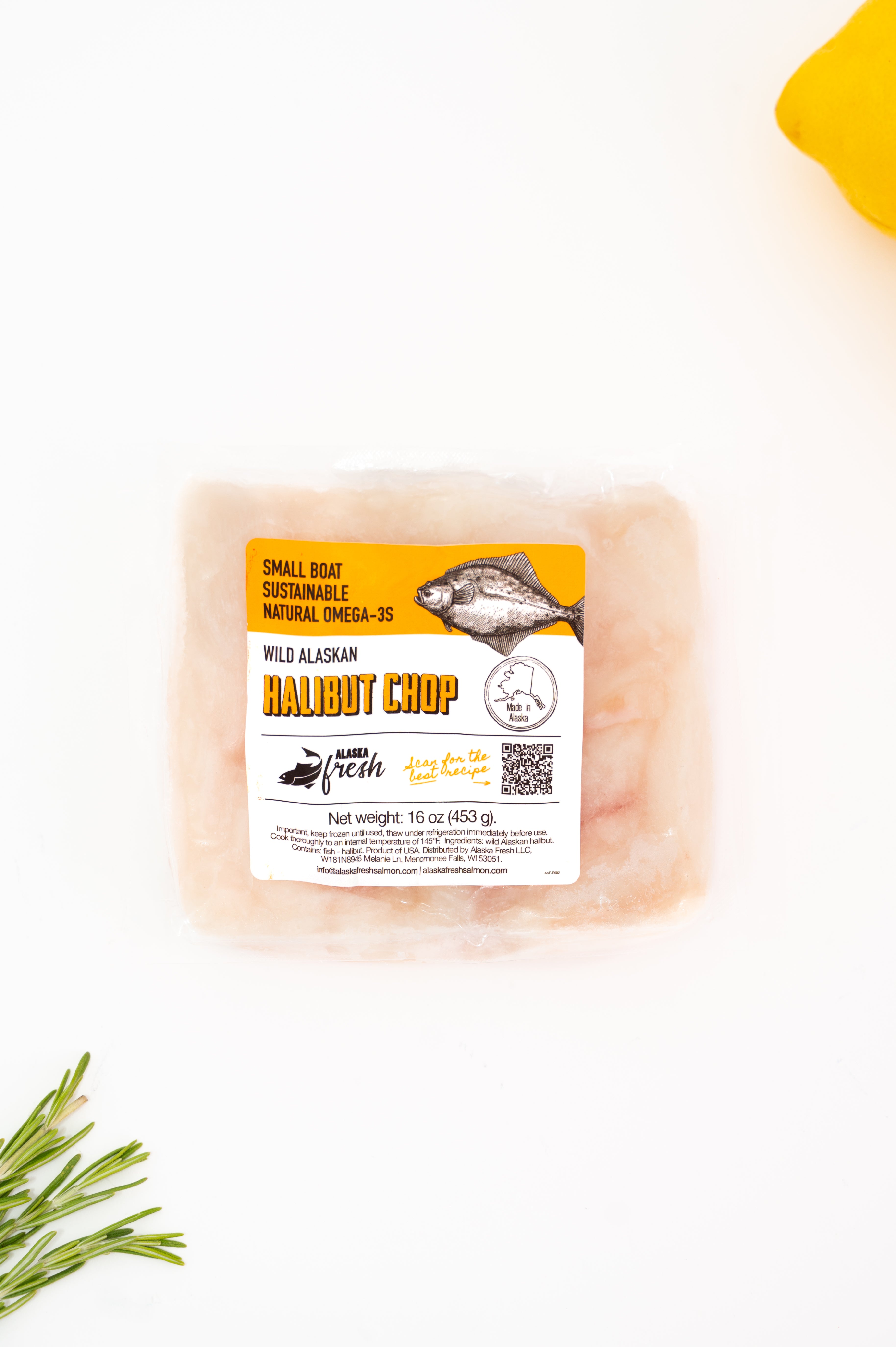
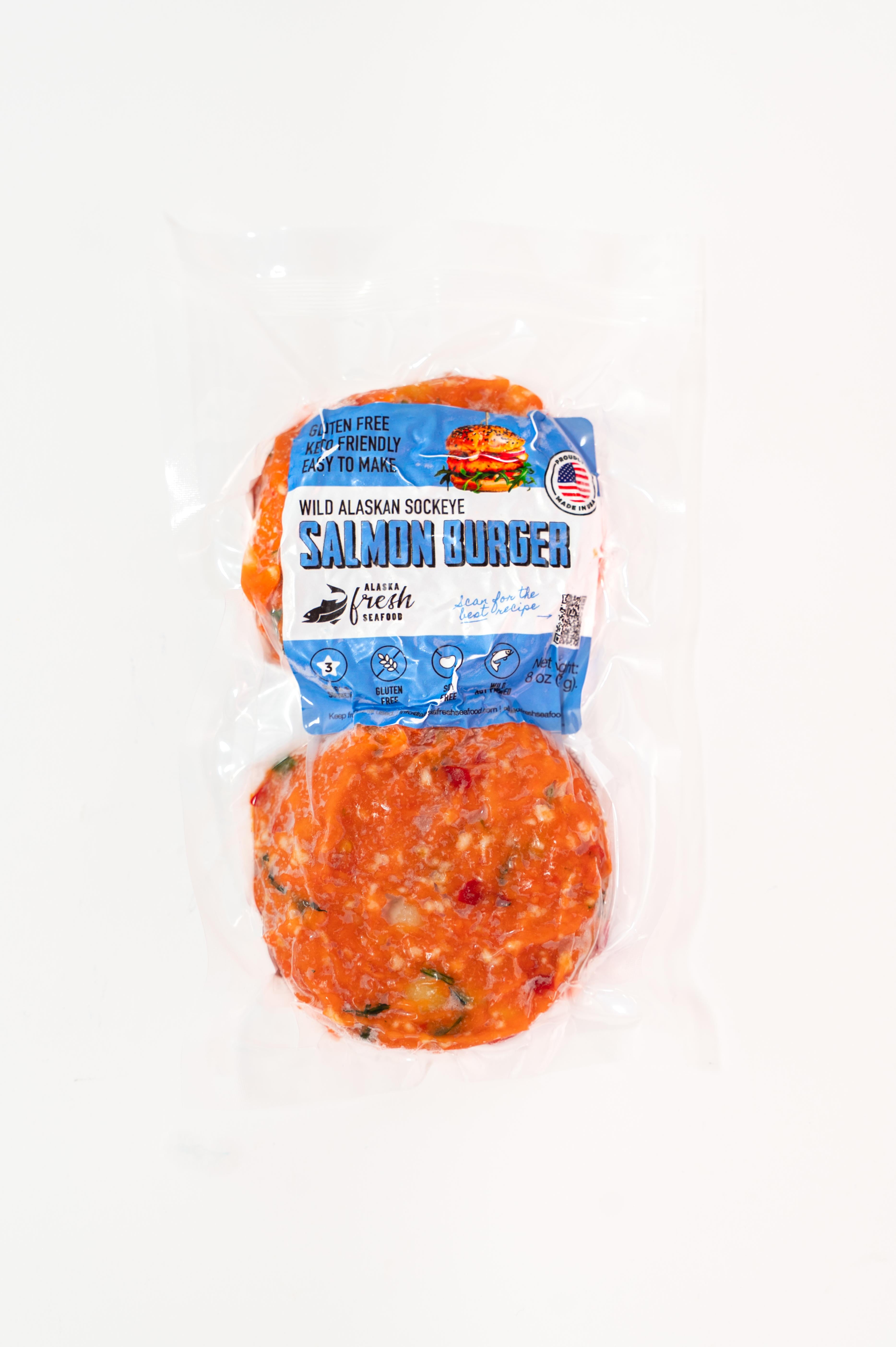
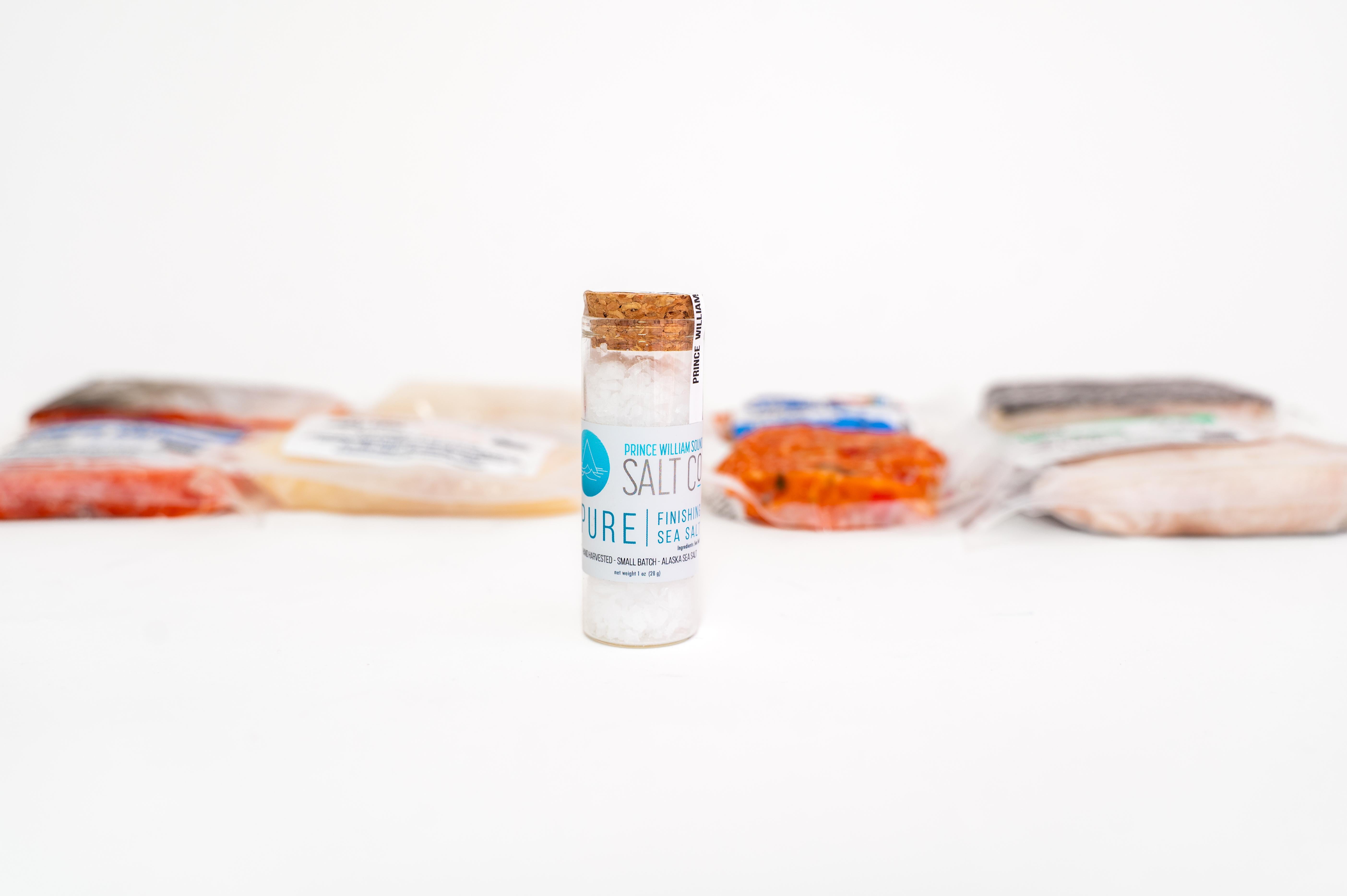
Taste of Alaska Box
The legend that made Copper River famous. Every spring, Copper River sockeye battle 300 miles of fierce glacial currents, building the rich fat, firm texture, and deep ruby-red color that made this the most famous salmon run in the world. This is the bold, clean-flavored Alaska salmon that chefs wait for all year, the one that turned "Copper River" into a mark of excellence.
Add a Gift Message
Make this gift extra special with a personalized message

Wild caught in Alaska

Flash-frozen at peak freshness

Most omega-3s in any salmon
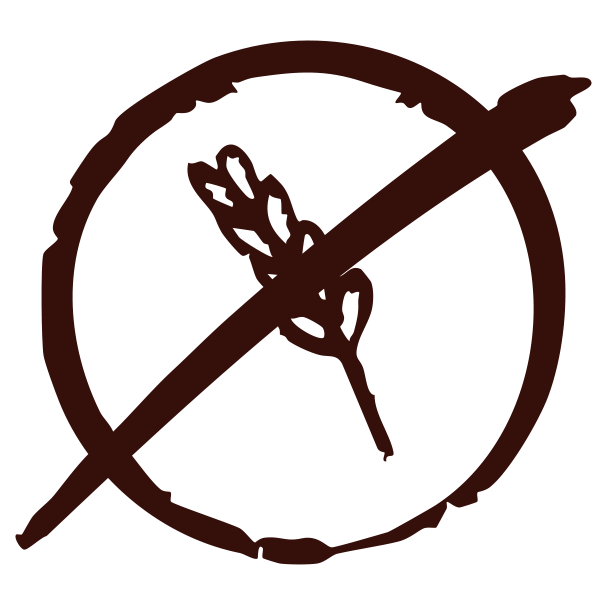
Gluten free, keto and paleo friendly

Frozen guarantee
PACKED WITH GOODNESS
Our Taste of Alaska Box was carefully curated to create an unmatched wild seafood experience.
This special box contains:
- Copper River Sockeye Full Fillet (~2lb) - 1pc
- Wild Alaskan Halibut (6 oz) - 2 pcs
- Wild Alaskan Keta (6oz) - 2 pcs
- Wild Alaskan Black Cod / Sablefish (6oz) - 2 pcs
- Wild Alaskan Halibut Chop (1 lb) - 1 pc
- Sockeye Salmon Burgers - Wild Alaskan (8 oz) - 1 pc
- Wild Alaskan Smoked Sockeye Salmon Pouch (4oz) - 1 pc
- Prince William Sound Pure Flake Finishing Sea Salt (1/2 oz) - 1 pc
If you include a gift message at checkout, the box comes with a complimentary handwritten card with your personalized message.
The highlight of this box is a full side of our Copper River sockeye. Our most popular salmon never disappoints with its bright red color, bold flavor, and key nutrients that include Omega-3s, proteins, vitamins, and a powerful antioxidant astaxanthin.
The wild Alaskan salmon burgers very quickly became one of our most popular products. They are non-GMO, gluten free and soy free. The only main alergen is fish, which makes them safe to eat for almost anyone. They pair very well with brioche bun, mayo, mustard and lettuce or baby spinach.
Two wild Alaskan halibut fillets will bring a smile to every seafood lover's face, but they're excellent for people who don't eat ocean products that often. The meat-like texture and delicate flavor make halibut an excellent "gateway" fish for anyone who is trying to find their way to eating more seafood.
The wild Alaskan halibut chop adds to the versatility of our box. The chop are trims and little nuggets of halibut fillets that were too small to make a whole 6oz fillet, but they are from the same fish. That makes them perfect for fish tacos, fish nuggets, rice bowls, burritos, and many other recipes.
Omega-3s are one of the main reasons people want to add seafood to their diet and wild Alaskan sablefish has more of them than almost any other fish! This underrated delicacy, also known as black cod, has flaky meat and smooth, buttery texture with a hint of sweetness that reminds you of crab legs.
Our keta salmon is a lean salmon option that's packed with protein and thanks to its mild flavor, it is an excelent base for fun recipes and flavorful sauces and spice rubs.
Smoked Wild Alaskan Sockeye salmon pouch contains 4oz of cold smoked and pressure-cooked salmon that will show you the Alaskan way of smoking and preserving fish. The careful process preserves all the juices, flavors, and nutrients in the fish, while smoking and cooking make this product shelf stable and ready to eat. The one-of-a-kind packaging makes this pouch an ideal companion for travel, while the contents of the pouch can produce a world class meal or be a healthy and nutritiout snack by itself.
If you like to add a little flavor to your fish, our Prince William Sound Pure Flake Finishing Sea Salt is perfect for you. The salt was harvested by Alaskan commercial fishermen in the same area where your fish are caught. The local science center helped them develop the salt harvesting process, balancing the perfect salt content or the product and environmental protection of the ocean.
OUR FISH SOURCE
Our fish are caught exclusively by small boat Alaskan fishermen in the Copper River and Prince William Sound fishing districts just outside of Cordova, Alaska.
The men and women in our fleet are dedicated to the best handling practices, such as bleeding every fish immediately after it comes out of the water, using slushed ice or refrigerated sea water to minimize the pressure on the meat and keeping their fishholds at 32 – 36 degrees Fahrenheit to maximize the shelf life of the product while they transport and deliver their catch to our processor.
SHIPPING INFORMATION
STANDARD SHIPPING:
Your order will ship via UPS the Monday, Tuesday or Wednesday after you place your order. Your fish will arrive Tuesday - Thursday depending on your location. The orders are shipped from our hub in Milwaukee with dry ice for transit. Don’t worry, ALL fish are from Alaska! We do quality control and reduce your shipping cost by shipping from Milwaukee.
EXPEDITED SHIPPING:
If you pick expedited shipping during checkout, your order will be shipped within one business day with overnight delivery. With the exception of our shelf stable products, we are not able to ship on Fridays.
PICK-UP:
You will receive an email when your order is ready with instructions on how to coordinate your pick-up date, time, and place.
FROZEN GUARANTEE
Frozen shipments are shipped with ample dry ice to sustain the shipment duration. Frozen products need to be put in the refrigerator for immediate consumption or in the freezer for future use shortly after delivery. The dry ice is sublimating during the shipping process so your shipment may arrive with no ice left in the box, but it is good and safe to consume as long as it remains frozen.
If your shipment arrives partially thawed on the edges, it is still good and safe to consume. If the frozen products arrive completely thawed out or damaged in any other way, please take pictures and/or videos with as many visual details as possible and contact us for a possible refund or reship.
WHAT IS INCLUDED
The Wild Difference You Can See, Taste & Feel
Good For You Naturally
Recommended recipe

Wild Alaskan Halibut Ceviche
The most amazing show stopper you can bring to any hot summer gathering- HALIBUT CEVICHE.
Makes: 4 servings
Prep time: 30 minutes
Marinade time: at least 30 minutes, up to 2 hours
Ingredients
1 pack of wild Alaskan halibut nuggets or 2 halibut fillets, thawed
2 medium-sized tomatoes, diced
1/2 of red onion, diced
½ cup fresh cilantro, diced
1 small jalapeño, diced
½ cup fresh-squeezed lime juice
½ cup fresh-squeezed lemon juice
1 ½ teaspoons salt (add more to taste)
2 avocados - diced into the ceviche, or sliced and served on the side
Optional: cucumber and/or bell pepper
Directions
1. Blot excess moisture from thawed halibut with a paper towel. Place the halibut, onion, tomato, cilantro, jalapeño, and avocado (if adding) in a medium mixing bowl.
2. In a small mixing bowl, combine lime juice, lemon juice, and sea salt. Pour the mixture over the raw halibut mixture.
3. Stir gently until combined. Cover and place in the refrigerator.
4. Allow the halibut to marinate for 30 minutes to 2 hours until the ceviche is chilled, and the halibut is opaque and "cooked" through.
5. Serve the wild Alaskan halibut ceviche with tortilla chips, plantain chips, or sliced cucumbers.
Recommended drink pairings:
· Fresh-squeezed lemonade
· Lime margarita
· White wine

How to Cook Copper River Salmon
Cooking Copper River salmon might seem intimidating, but don't be discouraged from introducing it to your kitchen! Once you become familiar with the process, it can become your preferred form of "fast food."
Sautéed & Pan-Seared
1. Coat both sides of the Copper River salmon with oil or butter.
2. Season the Copper River salmon to your liking.
3. Heat a pan over medium-high heat.
4. Cook each side for 3-4 minutes.
Roasting and Broiling
1. Preheat the oven to 450°F.
2. Brush both sides of the Copper River salmon with oil or butter.
3. Season the Copper River salmon as desired.
4. Cook for 8-10 minutes.
Poaching
1. Simmer water in a large pan.
2. Turn off the heat and add the Copper River salmon skin side down.
3. Ensure the liquid completely covers the fish.
4. Cover the pan tightly and return to a light simmer.
5. Cook for 4-6 minutes.
Grilling
1. Marinate or season the Copper River salmon (salt only is a favorite!).
2. Clean and preheat the grill to medium heat (about 400 degrees F).
3. Oil the skin side of the Copper River salmon and place it skin side down on the grill. You can also use a grill pan or tin foil.
4. Grill for about 8 minutes or until white fat marbles out of the Copper River salmon. For Prince William Sound halibut, grill until it is opaque all the way through.
Perfect Pairings
The rich flavors of Copper River salmon pair beautifully with dry red and white wines with fruity notes such as Pinot Noir and Cabernet sauvignon. Alternatively, pair it with hoppy beers like IPAs and pilsners.
Friendly Flavors
Herbs: Cilantro, dill, parsley, rosemary, thyme
Aromatics: Garlic, green onions, shallots, tender green herbs
Complements: Avocado, cucumbers, citrus, miso, mustard, ginger
When finished, Copper River salmon flesh should be opaque and separate easily with a fork.

Top 5 Best Sauces for Sablefish (Black Cod)
Sablefish, also known as black cod or butterfish, is a versatile type of seafood with a rich, buttery texture and delicate flavor profile
TOP PICK FOR SABLEFISH - Miso Glaze: 5/5 stars
One highly recommended sauce pairing for sablefish is a classic miso glaze. The umami depth of the miso pairs exceptionally well with the natural fattiness of the sablefish, creating a harmonious balance of flavors. The glossy glaze also helps to caramelize the exterior of the fish for appealing visual and textural contrast.
Try this Miso Glazed Sablefish recipe.
Second best for Sablefish - Lemon Caper Sauce: 4.5/5 stars
Another excellent sauce option is a vibrant lemon caper sauce. The bright, acidic notes of fresh lemon juice and briny capers provide a lovely contrast to the buttery richness of the sablefish fillets. This simple yet elegant sauce allows the natural flavors of the fresh sablefish to shine.
See the Lemon-Caper Black Cod with Broccoli & Potatoes recipe
Beurre Blanc: 4.5/5 stars
Another French-inspired sauce that pairs exceptionally well with sablefish is a classic beurre blanc. This velvety white wine and butter sauce provides a luxurious backdrop for the natural richness of the butterfish. The creamy, emulsified texture of the beurre blanc melds seamlessly with the buttery flesh of the sablefish.
See the Sablefish with Beurre blanc sauce recipe
Teriyaki Sauce: 4/5 stars
For those seeking a more glazed and sticky sablefish preparation, a classic teriyaki sauce is a strong contender. The balance of sweet and salty flavors in the teriyaki complements the flavor profile of sablefish, and the thick, glistening texture of the sauce coats the fish beautifully.
See the Teriyaki-braised Alaska sablefish recipe
Pesto: 4/5 stars
Rounding out the top sauce options is a flavorful honey garlic sauce. It's a delightful blend of sweet and savory flavors, perfect for enhancing the taste of fish. This versatile sauce combines the rich sweetness of honey with the pungent depth of garlic. Often featuring soy sauce for a touch of umami, and sometimes a hint of ginger for warmth, honey garlic sauce is ideal for marinating, glazing, or serving as a dipping sauce.
Try this Honey Garlic Sablefish recipe.
ASK YOUR FISHMONGER
What makes Copper River salmon special?
Copper River salmon have to swim 300 miles up the stream of an icy cold Copper River Watershed to get to their spawning grounds. They have to gather enough muscle and fat to survive this tremendous journey. The high fat content gives Copper River salmon its incredible taste, moist texture and a lot of Omega-3 acids, one of the most important nutrients in any fish.
This unique salmon is praised amongst the top chefs for its taste and texture qualities, while home cooks also enjoy the simplicity. Copper River salmon tastes so good that the only other ingredient you need is a little bit of salt.
High quality brings high demand, but whether you look for kings, sockeyes, or cohos, Copper River salmon is hard to get. Knowing its uniqueness and fragile balance in the ecosystem, everyone involved in the Copper River fishery works towards a sustainable future. Fishing season is short with areas and times regulated to guarantee the needed escapement for future populations to thrive year after year.
Fishermen are often considered lucky to be able to participate in the Copper River fishery and they are known to be a poster child of quality fish handling and temperature control.
When is Copper River salmon season? Is this from this year's catch?
Copper River king salmon has the shortest fishing season, usually from mid to late May until late June, early July. Copper River sockeyes can be caught from mid May until late July and cohos usually run from early August until late September.
Why is Copper River sockeye salmon more expensive than regular sockeye?
Copper River sockeye salmon is more expensive than regular sockeye because of where and how it’s harvested, and how it’s handled. Think of it as the “wagyu beef” of salmon. Copper River sockeye (same as Copper River coho and king) are specifically from the Copper River fishing district, in South Central Alaska, full of pristine, glacial-fed waters. The salmon swim free range for 3-7 years in the Pacific ocean to build up fat and muscle for their 300 mile journey against the strong and cold river current back to their spawning grounds in the Chugach mountains.
The fish are harvested by one person, on a small boat, each one picked from the net, by hand. There are no mass fishing boats allowed in the district. The fishery is a poster child for quality and sustainability, unlike many fisheries around the globe where fish stocks are drained.
The fishing fleet is less than 500 boats, all of which undergo specific training and protocols for how to properly handle each fish after catch with particular bleeding and slush-ice storage methods.
Fishing for Copper River salmon is an art form. The technique has not changed much over centuries, which is becoming more and more rare as working waterfronts collapse due to mismanagement - something you do not need to worry about when sourcing from the Copper River.
Why is the fish frozen?
Flash freezing fish right after catch is the only way to preserve its quality. Fish in general have very short shelf life and they start to spoil right out of the water. Bringing fish from Alaska without freezing can negatively affect the appearance, structure and taste.
It's a seasonal fish so you need to stock up in the summer to enjoy it year-round. We freeze our fish at peak freshness, as soon after the catch as possible, so when you thaw them out before cooking, they taste as fresh as they were when they came out of the ocean.
What's the best way to cook halibut without it falling apart?
Halibut is not like haddock or walleye and does not fall apart when cooking. It is a very steaky fish and maintains it’s structure when grilling, baking, pan-searing or air frying. Because our fish is sushi-grade, we always recommend to cook it for less time than you think, so as not to dry it out. Fish also continues to cook once it's removed from the heat source.
Does halibut taste 'fishy'?
We like to say that “halibut is the white fish that ruins every other white fish” because it is so darn good. It literally does not taste like fish. It is super “steaky” and mild in flavor which makes it a popular choice on restaurant menus.
I've never heard of sablefish. What is it?
Sablefish is also called Black Cod or Pacific Butterfish. It is a super healthy fish with a buttery texture and sweet flavor. It has more omega-3 fatty acids than Copper River king salmon! It may be the most underrated wild Alaskan fish on the market.
Majority of the Alaskan sablefish catch gets exported (mostly to Japan), but in recent years it has been steadily gaining popularity in the US.
What does sablefish taste like?
Imagine a super fresh high end cod that’s cooked in a lot of butter. Silky and buttery, with a very recognizable sweet taste. All you need is salt and pepper and sablefish, or black cod as a lot of people call it, will not disappoint.
How do I cook sablefish?
Like our salmon and halibut, you can just add salt and pepper and bake, pan-sear, fry, grill or air-fry and you will end up with a fantastic meal comparable to a high end restaurant. We’ll give you instructions for each cooking method with your order. Also check out this popular post - Top 5 Best Sauces for Sablefish.
Meet your Fishmongers
With 17+ years living in Cordova, Alaska, owners Adra and Juro built relationships directly with local fishermen and ran seafood processing operations, giving us the inside perspective most seafood companies simply don't have.
We hand-pick each fish from trusted boats, then partner with elite processor Copper River Seafoods (where Juro worked for 13 years) to ensure every fillet is perfectly cut, flash-frozen within hours, and vacuum-sealed to lock in peak freshness for up to two years.
While there's a myth that "never frozen" is best, the truth is unless you live on the Alaska coast, our flash-frozen fillets will taste fresher than anything that's been shipped fresh for days. We guarantee that our proven boat-to-box process delivers the quality consistency you deserve, with the personal expertise you can trust.

